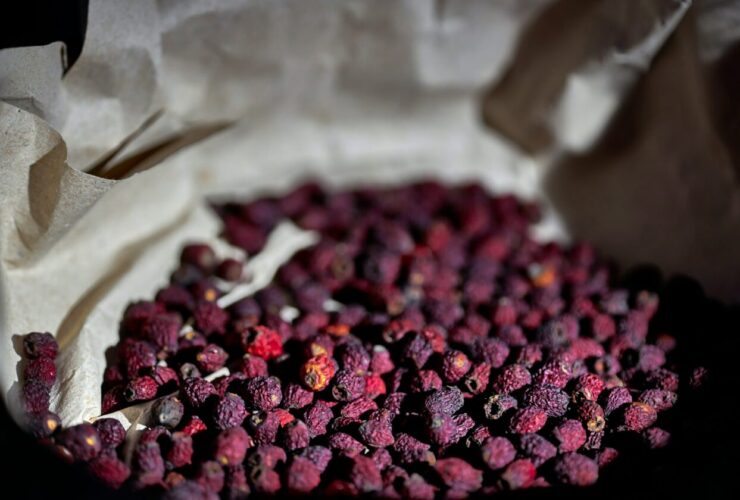Introduction
Menopause, a natural biological process, marks the end of a woman’s reproductive years. Nevertheless, several unpleasant symptoms are frequently associated with it, such as mood swings, hot flashes, and irregular sleep patterns. These symptoms may greatly impact a woman’s quality of life, prompting many to seek practical management solutions.
Alternative methods of managing menopause have been more and more popular in recent years, and one such method is the keto-green diet, which shows great promise. The goal of the keto-green diet is to improve hormonal balance and relieve menopausal symptoms by combining the principles of the ketogenic diet with an emphasis on alkaline, nutrient-rich green vegetables. One of the main proponents of this strategy, Dr. Anna Cabeca, suggests eating more green veggies to increase the body’s alkalinity and balance hormone levels. The keto-green diet is becoming more and more popular, so it’s important to investigate its possible advantages and things to keep in mind for menopausal women looking to reduce their symptoms.
Deciphering the Keto Green Diet: What Sets It Apart?
The keto diet, or the ketogenic diet, is a high-fat, low-carbohydrate eating regimen intended to cause the body to enter a state of ketosis. When the body is in ketosis, it burns fat for energy rather than carbs, which promotes weight loss and better metabolic health. Those who adhere to the keto diet want to replace glucose as their body’s primary energy source with ketones by drastically reducing their carbohydrate intake and increasing their fat intake.
This metabolic change is thought to provide several health advantages, such as improved mental clarity, better blood sugar regulation, and higher energy levels. It’s important to remember that not everyone can follow the ketogenic diet, especially if they have specific medical issues or dietary restrictions.
The keto green diet’s “green” component strongly emphasizes the benefits of eating alkaline, nutrient-rich green vegetables for overall well-being and hormonal balance. Rich in vital vitamins, minerals, and antioxidants, green vegetables like spinach, kale, broccoli, and Swiss chard are important for hormone balance and cellular health. These veggies also go well with the ketogenic diet because they are low in carbs. Green veggies are a great way for people to maximize their intake of nutrients, stay in ketosis, and possibly even reduce menopausal symptoms.
Dr. Anna Cabeca, a renowned women’s health expert, is a leading advocate for the keto-green diet. As a comprehensive strategy for treating menopause and fostering hormonal balance, Dr. Cabeca created the keto green diet, drawing on her personal experiences as well as her medical knowledge. Her mission is to enable women to change their diets and lifestyles to take charge of their health. For maximum well-being during menopause and beyond, Dr. Cabeca’s guidelines emphasize the significance of complete, nutrient-dense diets, regular physical activity, stress management, and appropriate sleep. People who follow Dr. Cabeca’s method can employ nutrition’s transforming ability to help their menopausal transition and attain long-term health and vitality.
Navigating Menopause with Keto Green Wisdom
The Keto Green Diet prioritizes hormonal balance through nutrition, providing a novel approach to addressing menopausal symptoms. This diet’s mainstay, green vegetables, are high in vitamins, minerals, and antioxidants that promote hormone balance and general health. Hot flashes, mood swings, and other common discomforts associated with this period of life may be relieved for those experiencing menopausal symptoms by adopting a ketogenic diet that includes plenty of green vegetables. Women facing the obstacles of menopause can benefit from the supportive environment created by the emphasis on alkaline-forming foods, which further support hormonal equilibrium.
The Keto Green Diet has gained popularity, but not without its share of myths and misconceptions, especially when it comes to its suitability for menopausal women. By dispelling these misconceptions and distinguishing fact from fiction, people are better equipped to make educated food choices throughout menopause.
The effectiveness of ketogenic diets in promoting weight loss and enhancing metabolic health has been scientifically shown, and these benefits may extend to menopausal women. To ensure safety and efficacy, it is imperative to speak with a healthcare professional before implementing any major dietary changes, particularly during menopause. By busting myths and supplying fact-based knowledge, people may handle menopausal management with clarity and confidence.
Practical Strategies for Embracing the Keto Green Lifestyle

Choosing foods that support alkalinity and ketosis is key to starting a Keto Green Diet. Green leafy vegetables, such as broccoli, kale, and spinach, are essential because they are rich in vitamins, minerals, and antioxidants for hormone balance. Healthy fats like avocado, coconut oil, and olive oil can be included to promote ketone synthesis and provide long-lasting energy. To ensure satisfaction and muscle maintenance, protein sources such as wild-caught fish, free-range eggs, and grass-fed meats complete the dish. Try out some Keto Green recipes, such as roasted vegetable medleys, avocado-dressed salads, and green smoothies, to add diversity and taste. Following a Keto Green diet may be pleasurable and sustainable with these delectable foods.
Although the Keto Green Diet provides a framework for managing weight and achieving hormonal balance, it is crucial to customize it to suit the needs and tastes of each individual. A more stringent ketogenic diet may work better for some people, while a more lenient interpretation that permits rare deviations may be more beneficial for others. Achieving the ideal balance requires paying attention to your body’s signals and modifying them as necessary.
Consider variables such as your level of exercise, metabolic rate, and taste preferences when customizing the Keto Green Diet to fit your lifestyle. Intermittent fasting or periodic carb cycling can promote metabolic flexibility and help avoid plateaus. You can make the Keto Green Diet work for you in the long run by experimenting with different strategies and paying attention to your body.
The Keto Green Diet may have difficulties like any other diet plan. Common roadblocks include travel, social gatherings, and food cravings high in carbohydrates. However, these difficulties can be addressed, provided thorough planning and mental adjustments are made. Make meal planning and bulk cooking a priority so that, even in busy times, you always have Keto Green-friendly options.
When eating out or at parties, choose dishes high in protein and vegetables and low in carbohydrates and sweets. Create a network of like-minded people to lean on for accountability and support as you embark on your Keto Green journey. Remember that patience and time are necessary for lasting improvement, and acknowledge each little accomplishment as it happens. With tenacity and resolve, you can overcome challenges and lead a successful, long-term Keto Green lifestyle.
Exploring the Broader Benefits of the Keto Green Diet
Beyond helping with menopausal symptoms, the Keto Green Diet offers a comprehensive strategy for nourishing the body and the mind. This dietary approach provides vital vitamins, minerals, and antioxidants for general health and well-being by focusing on nutrient-dense green vegetables and healthy fats. Green veggies are high in dietary fiber, which helps regulate weight by promoting fullness and supporting digestive health. Additionally, the ketogenic diet’s neuroprotective qualities may improve cognitive performance and promote brain health. The Keto Green Diet provides the body with nutritious, nutrient-rich meals as fuel, which lays the groundwork for optimum health and energy at any stage of life.
The Keto Green Diet is becoming more and more popular among athletes and fitness enthusiasts as a way to maximize performance and recovery. Instead of using carbs as the main fuel source, fat allows the body to access a virtually infinite energy supply, increasing stamina and endurance. Furthermore, the Keto keto-green diet might have anti-inflammatory properties that lessen inflammation through exercise and hasten recovery. After their bodies fully acclimate to using ketones as fuel, many athletes report maintained energy levels and improved performance. However, some athletes may go through an adjustment period. Regardless of your experience level, the Keto Green Diet is a novel method for supplying your body with the nutrients it needs to function at its best.
Besides its health advantages, the Keto Green Diet aligns with sustainable and environmentally conscious lifestyle concepts. People on the Keto keto-green diet can greatly lower their environmental effects and carbon footprint by emphasizing plant-based foods and minimizing their use of animal products. Diets based mostly on plants have been demonstrated to consume less natural resources and emit fewer greenhouse gases than traditional Western diets high in animal products. Furthermore, people may lessen their impact on the environment and promote sustainable agriculture methods by prioritizing organic produce that is produced locally. Adopting the Keto Green Diet helps improve one’s and the earth’s health for the coming generations.
What is a Keto Green Diet?
A. Answer in Short
A Keto Green Diet is a dietary approach that combines the principles of the ketogenic diet with an emphasis on consuming green, leafy vegetables. This diet aims to achieve ketosis, a metabolic state where the body burns fat for fuel instead of carbohydrates, by significantly reducing carbohydrate intake and increasing the consumption of healthy fats and moderate amounts of protein. The “green” aspect of the diet focuses on nutrient-dense green vegetables, which provide essential vitamins, minerals, and antioxidants while promoting alkalinity in the body. By following a Keto Green Diet, individuals may experience weight loss, improved energy levels, and better hormonal balance, making it particularly popular among those seeking relief from menopausal symptoms.
B. Answer in Depth
The Keto Green Diet represents a unique approach to nutrition that blends the principles of the ketogenic diet with the health-promoting properties of green, leafy vegetables. The Keto Green Diet aims to shift the body’s primary fuel source from carbohydrates to fats, leading to ketosis. This metabolic state has various health benefits, including weight loss, improved insulin sensitivity, and enhanced mental clarity. By drastically reducing carbohydrate intake and increasing the consumption of healthy fats, such as avocados, nuts, seeds, and olive oil, individuals following the Keto Green Diet encourage their bodies to burn fat for energy instead of relying on glucose from carbohydrates.
In addition to emphasizing fats, the Keto Green Diet strongly focuses on consuming green, leafy vegetables, such as spinach, kale, broccoli, and Brussels sprouts. These vegetables are rich in vitamins, minerals, and antioxidants, which support overall health and well-being. Furthermore, green vegetables are low in carbohydrates and calories, making them an excellent choice for those looking to maintain ketosis while still meeting their nutritional needs. By incorporating a wide variety of green vegetables into their meals, individuals following the Keto Green Diet can ensure they receive essential nutrients while promoting alkalinity, which may help alleviate inflammation and support hormonal balance.
Overall, the Keto Green Diet offers a balanced approach to nutrition that combines the metabolic benefits of ketosis with the nutritional richness of green, leafy vegetables. Whether seeking weight loss, improved energy levels, or relief from menopausal symptoms, individuals may succeed with this dietary approach by focusing on quality fats, moderate protein intake, and abundant nutrient-dense green vegetables. However, as with any diet, you must consult a healthcare professional before making significant changes to your eating habits to ensure they align with your health goals and needs.
Conclusion
As we come to the end of our investigation into the Keto Green lifestyle, it is clear that this nutritional strategy presents encouraging opportunities for women attempting to manage the challenges of menopause. People can take proactive measures to achieve hormonal equilibrium and get relief from common menopausal symptoms by adopting the concept of the Keto Green Diet. Whether you’re having hot flashes, mood swings, or trouble sleeping, switching to a Keto Green diet could give your body the balance and support it needs during this life-changing phase. As a result, consider adopting Keto Green practices into your everyday life and start the process of regaining your health and energy.
We should be grateful for the advancements in our knowledge of and ability to manage menopause as we consider the transformational potential of tailored nutrition. Those looking for alternative ways to hormonal health and well-being can find hope in the Keto Green lifestyle. Understanding the significant effects our nutrition and lifestyle choices can have on our bodies gives us the power to make decisions supporting our long-term health objectives. Thus, let’s acknowledge our advancements and keep advocating for tailored nutrition as the basis of overall wellness, enabling people to flourish at every stage of life.
In menopausal management, the future is bright, and the Keto Green lifestyle is ideally positioned to be a major factor in promoting women’s health and vitality. Dietary strategies that address hormone imbalances and enhance general well-being should continue to innovate as research and understanding of menopause deepen. For women looking for all-natural remedies for menopausal symptoms, the Keto Green diet has a hopeful future due to its emphasis on nutrient-dense foods, metabolic flexibility, and hormonal balance. As a result, let’s approach the trip ahead with hope and curiosity while keeping an open mind about how Keto Green living might revolutionize our happiness and overall health.
Reference
“Dr. Anna Cabeca.” 2024. Dr. Anna Cabeca. 2024. https://drannacabeca.com/.
(1) The Alkaline Diet: An Evidence-Based Review – Healthline
https://www.healthline.com/nutrition/the-alkaline-diet-myth
(2) A List of the Best High-Protein, Low-Carb Foods – Insider
https://www.insider.com/guides/health/diet-nutrition/high-protein-low-carb-foods
(3) Refined Carbs and Sugar: The Diet Saboteurs – HelpGuide.org
https://www.helpguide.org/articles/healthy-eating/choosing-healthy-carbs.htm
(4) How to get into ketosis faster – Medical News Today
https://www.medicalnewstoday.com/articles/324599
(5) Effects of Ketone Bodies on Brain Metabolism and Function in Neurodegenerative Diseases
https://www.ncbi.nlm.nih.gov/pmc/articles/PMC7699472/
(6) Carbohydrates and Blood Sugar | The Nutrition Source
https://www.hsph.harvard.edu/nutritionsource/carbohydrates/carbohydrates-and-blood-sugar/
(7) Antioxidants | The Nutrition Source
https://www.hsph.harvard.edu/nutritionsource/antioxidants/
Was this helpful?

Joseph Emb, RDN
Founder of StyleVitally.com | Registered Dietitian & Wellness Advocate
What I Cover:
I’m passionate about connecting nutrition science and everyday wellness to help people live healthier, more vibrant lives. I write about evidence-based nutrition, mindful eating, sustainable lifestyles, and holistic well-being at StyleVitally.com.
My Background:
The University of Texas in Austin, where I earned my Dietetics diploma, laid the groundwork for my nutrition and health career. My training and hands-on experience taught me the science and art of using nutrition to enhance health and well-being.
Professional Journey:
I’m an RDN with lots of experience. I’ve helped people seeking tailored nutritional recommendations in clinical settings and community outreach programs. My constant learning and professional development ensure that my recommendations are always based on the latest evidence.
Ethical Commitment:
My practice prioritizes integrity. My content is transparent and objective, following the most significant ethical standards. I can give my audience unbiased advice because I’m not affiliated with food businesses or industry associations. I want to help people make informed health decisions that match their values and ambitions.
Join Me on the Wellness Journey:
Join me on the path to vitality and well-being, whether facing nutritional issues, seeking sustainable lifestyle changes, or simply wanting a better, happier you. We’ll discover how diet, mindfulness, and holistic well-being can maximize your potential.









